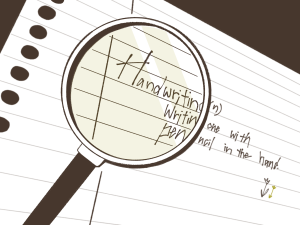An effective technique to learn about the people in your life is through handwriting analysis, which is examining someone’s handwriting to identify their personality traits. A sample of someone’s handwriting can help you learn more about them, and you can even examine your own writing to learn things about yourself.
According to experts, handwriting tests reveal insightful information since they offer a direct, unaltered view into a person’s thoughts. According to Bart Baggett, founder of Handwriting University International and author of The Success Secrets of the Rich & Happy, “Handwriting is brain-writing.” Other personality tests can be “gamed” or “influenced” by providing false information in response to the questions.

An effective technique to learn about the people in your life is through handwriting analysis, which is examining someone’s handwriting to identify their personality traits. A sample of someone’s handwriting can help you learn more about them, and you can even examine your own writing to learn things about yourself.
According to Wendy Carlson, a Certified Questioned Document Examiner and Handwriting Expert, “A fast overview of handwriting will give the reader a variety of information.” According to Carlson, the fundamental characteristics of handwriting, including its angles, slants, curves, and loops, all disclose a plethora of information. Handwriting can reveal a person’s learning preferences, level of emotional openness, and other personality qualities.

The first book on handwriting analysis, according to Jean-Charles Gille-Maisani in 1991, was Juan Huarte de San Juan’s Examen de ingenios para las ciencias from 1575. The first book in American graphology is thought to be Camillo Baldi’s 1622 work, Trattato cómo da una lettera missiva si conoscano la natura & qualità dello scrittore.
Jean-Hippolyte Michon developed an interest in handwriting analysis around 1830. Shortly after establishing Société Graphologique in 1871, he reported his findings. The most well-known of his followers was Jules Crépieux-Jamin, who wrote a number of books quickly and had them translated into various languages. Crépieux-Jamin created a comprehensive approach to graphology by building on Michon’s integrative methodology.
Following World War I, both in Europe and the United States, interest in graphology grew. Ludwig Klages established and published his discovery in Zeitschrift für Menschenkunde in Germany in the 1920s (Journal for the Study of Mankind). In Handschrift und Charakter, he made the most significant contribution to the field.
Based on their prior work with the US government, Thea Stein Lewinson and J. Zubin adapted Klage’s concepts and published their approach in 1942.
The American Grapho Analysis Society was established by Milton Bunker in 1929 to promote graphoanalysis. The American graphology community was divided in two by this organisation and its system. Students have to decide between comprehensive graphology and graphoanalysis.







